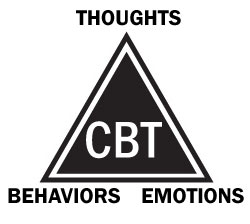
While panic attacks alone are not dangerous, living under the constant fear and threat of an impending attack is socially and emotionally incapacitating. Fortunately, panic attacks can be controlled, lessened and even eliminated altogether, by taking control of the underlying anxiety fuelling the panic attacks through self, group or individual therapy.
Many sufferers often combine therapeutic options with drug therapy. Anti-anxiety and anti-depressant drugs can be used to successfully eliminate panic attack symptoms altogether, however due to drug dependence risks and ineffectiveness after drug therapy cessation, the lifelong use of anti-anxiety or anti-depressant drugs is undesirable to control attacks.
What is desirable, however, is controlling anxiety and eliminating the underlying fears which prompt attacks through private and group coaching and CBT, Cognitive Behavioral Therapy. For those interested in pursuing self-therapy, a large number of self-treatment CDs and private workshops are based upon conquering panic using CBT-like techniques.
CBT
Cognitive Behavioral Therapy is a patient-centered series of sessions which teaches sufferers to manage panic attacks in various stages, culminating with practicing stress coping techniques in low anxiety situations, to desensitize the patient to the potential panic trigger. In many cases, the brain is “conditioned” to elicit a particular panic response to various stressors, so Cognitive Behavioral Therapy is a process of “de-conditioning” these automatic reactions and reconditioning the body and mind to behave and think differently to no longer recognize ordinary situations as inherent dangers or threats.
The process concentrates on handling, coping with, mastering and then eventually completely overcoming panic attacks. Modified versions of CBT are offered through many online courses, clinics, and self help treatment programs with high success rates.
CBT concentrates upon eliminating the behaviors and thoughts associated with stimulating panic attacks, and replacing them with positive thinking practices and behaviors to help sufferers cope in various stages.
Stages of Coping
In the first stage, patients learn about panic itself. Education and awareness about what causes panic is the first step to self-mastery over the problem. Anxiety is accepted as a natural and normal response; panic however is regarded as an excessive and inappropriate response in ordinary circumstances. Not only does the patient learn why panic attacks happen, the patient also learns that the core assumptions believed by panic attack sufferers – for example, that the sufferer will die, or that the sufferer is having a nervous breakdown – are untrue as well.
Behavioral patterns are also changed as well, with step two teaching sufferers effective breathing techniques that induce relaxation and create calmness. Shallow, rapid breathing encourages hypertension which only stimulates panic attack symptoms. Deep, even, abdominal based breathing not only creates a physiological feeling of calmness and relaxation, but also gives patients a psychological feeling of self control. This is combined with the stage three instruction on how to handle and distract panic thoughts and turn them into positive reinforcing thoughts.
Cognitive Behavioral Therapy then concludes with the ultimate challenge: practicing anxiety-coping skills in controlled low-anxiety situations. Patients will soon realize that the thoughts, beliefs and fears underlying the panic attacks are excessive, eccentric and unnecessary. The sufferer will then gradually elevate to medium anxiety situations, then high anxiety situations, until finally panic attacks diminish in frequency and severity and eventually disappear.
UltraFitnessDynamics Review: Panic Away Program by Barry Joey McDonagh

No comments:
Post a Comment